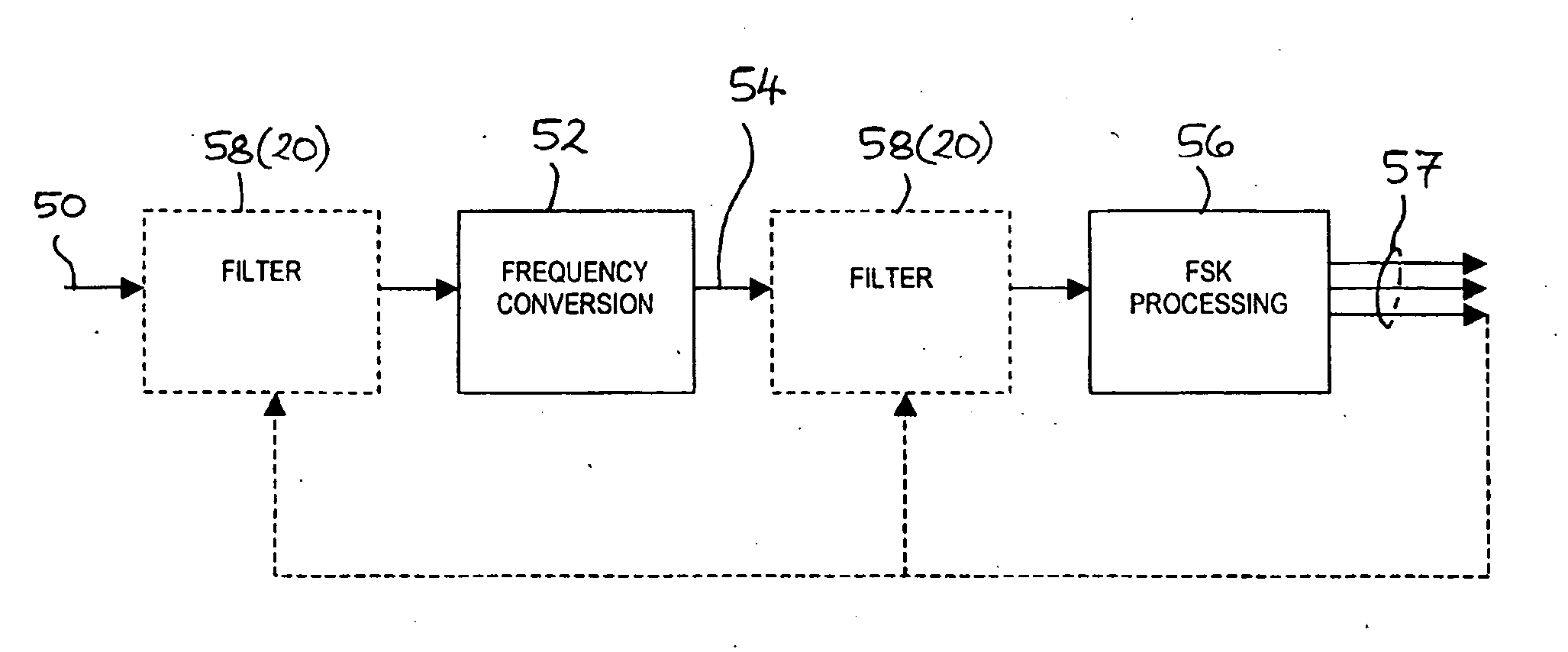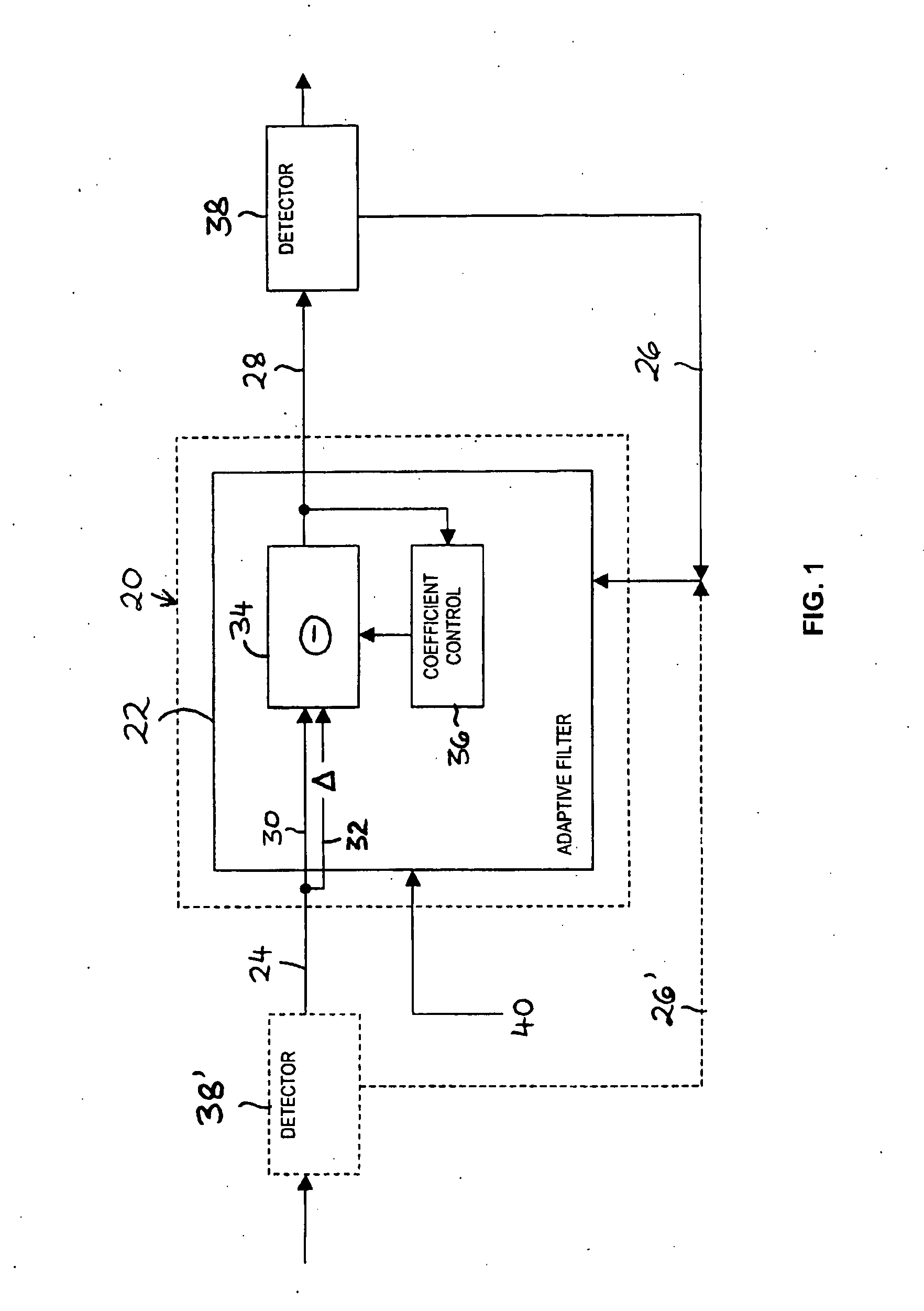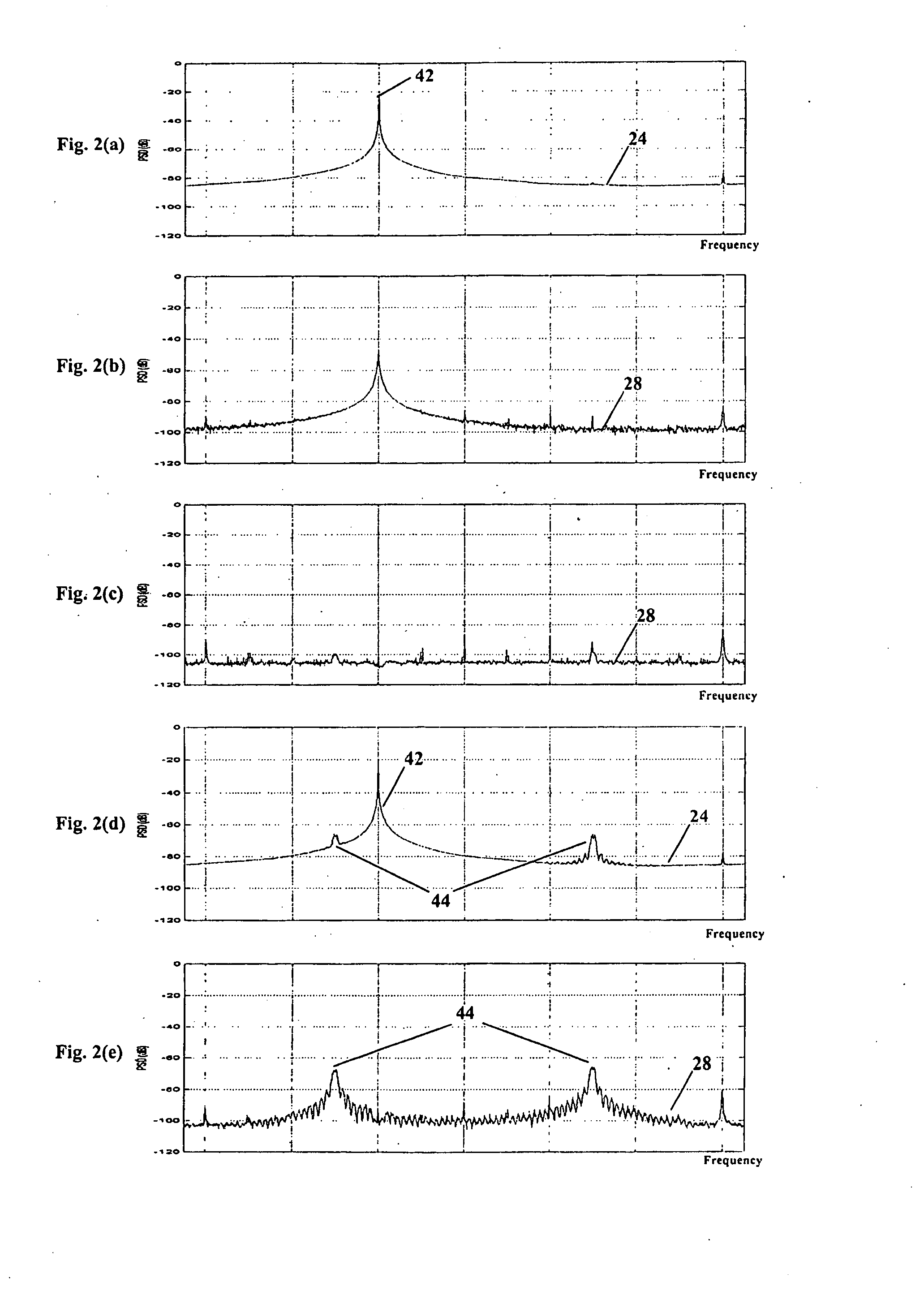Supressing interference for wireless reception and improvements relating to processing a frequency shift keyed signal
a technology of wireless reception and suppression interference, applied in the direction of line-faulst/interference reduction, transmission, modulated carrier system, etc., can solve the problem that the filter cannot adapt to remove the signal of interest, and achieve the effect of slow response and rapid respons
- Summary
- Abstract
- Description
- Claims
- Application Information
AI Technical Summary
Benefits of technology
Problems solved by technology
Method used
Image
Examples
first preferred embodiment
[0051] Referring to FIG. 4, a signal processor 60 is illustrated for processing a received FSK communications signal 62 in a receiver 64. The receiver 64 may be a wireless receiver, for example, a radio, microwave or infra-red receiver. One application of the present embodiment is in the field of remote control of security systems, for example, for vehicle security systems (e.g. alarm, immobilizer and / or door locks) or building security systems (e.g. alarm and / or door locks). The signal processor 60 may be implemented in hardware, or as software executed on a processor, or a mixture of hardware and software. The signal processor 60 may comprise a mix of analog and digital processing circuits.
[0052] The signal processor 60 may generally comprise a first conditioning section 52 for bandpass-filtering the received signal 62 and converting the frequency of the received signal to a complex baseband, a second section 22 for removing coherent interference signals in the baseband, and a th...
second preferred embodiment
[0097] The second preferred embodiment is very similar to the first preferred embodiment. The main difference lies in the manner in which the first and second FSK frequencies are discriminated in the complex baseband. The second embodiment uses the same circuitry and techniques as those of the first embodiment, except for the following differences.
[0098] As mentioned above, the demodulation is based on the fact that each FSK modulation frequency presents a different polarization (directional characteristic) in the complex baseband. For a given FSK ΔF range, it is possible to determine a certain sampling frequency for which the sign of the real and / or imaginary part of the autocorrelated signal can be utilized for demodulation of the FSK message. With an optimum sampling frequency, the phase between the two frequencies in the complex baseband is at least 90 degrees. Consequently, the two frequencies correspond to different real-imaginary quadrants of the trigonometric circle. In the...
case 1
[0110] If Δfc is small (or zero), the message can be obtained by the sign of the imaginary part of the complex signal, according to the expression: Γ(t,1)=Sbb(t)*Sbb*(t-1)≈ A2∑k=-∞∞χ1(t-kT)exp(-j2akπ Δ f)
PUM
 Login to View More
Login to View More Abstract
Description
Claims
Application Information
 Login to View More
Login to View More - R&D
- Intellectual Property
- Life Sciences
- Materials
- Tech Scout
- Unparalleled Data Quality
- Higher Quality Content
- 60% Fewer Hallucinations
Browse by: Latest US Patents, China's latest patents, Technical Efficacy Thesaurus, Application Domain, Technology Topic, Popular Technical Reports.
© 2025 PatSnap. All rights reserved.Legal|Privacy policy|Modern Slavery Act Transparency Statement|Sitemap|About US| Contact US: help@patsnap.com



